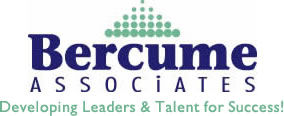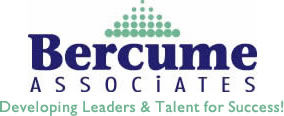Whether you’re charged with hiring or retaining top talent, if you’re able to take even the smallest amount of time each day to read local and national news, social media posts, or relevant blogs like ours, you know that the engagement and retention of employees is presently one of the most pressing concerns of HR and talent development professionals. As we discussed in our two most recent blog posts, despite the tight job market, and therefore, the challenge of competitor organizations eagerly wanting and needing to attract other organizations’ employees via a variety of tangible and intangible enticements, there are still actions that employers can take to hold on to their key talent.
The Increasingly Important Role of Company Culture – Your Best 2020 Defense
Whether your organization is a for-profit or non-profit, we believe that, now more than ever, creating an engaging, favorable “company culture,” will and needs to be at the top of HR and learning and development staff’s to-do list – not only because of the tight job market, but also because newer, younger generations of employees take greater stock of an employer’s culture when trying to decide whether to “stay or go.” Generation X, Millennials (Generation Y), and Generation Z won’t join an organization whose culture does not meet their values, lifestyles, and other requirements — and they won’t remain at one either.
So, what exactly is “company culture?” We think one of the easiest ways to wrap your arms around the concept of company culture is to think about the way you feel about your best friend, favorite family member, or significant other. You know and understand what they are all about. You enjoy their company and feel comfortable with them because, in most cases, you share similar values and ethics. Younger generations of employees want to have such a feeling about their employer, workplace, and teammates. What we’ve witnessed as executive coaches, leadership coaches, and as talent development and training professionals is this. Unlike with Baby Boomers and generations before them, for younger generations of employees, there’s less distinction between what they want/expect from their personal lives vs. work lives. This blurring of work and personal life expectations means many current and prospective hires will only work for an organization whose work environment, mission, value, ethics, goals, and expectations aligns well with/feels right to them.
Why Revisit Long-standing Methods & Tools To Support Desirable Culture Creation?
 2020 is definitely the year when organizations will need to be open to employing different tools and methods for engaging and retaining the best talent. Notice we said different vs. “new.” While they may be “new” to your organization, the method/tool we’re going to recommend to help create a company culture that employees will value and appreciate – and therefore, be more likely to remain at — is one that’s been around for many years. If you’ve never employed assessments, such as “The Five Behaviors of a Cohesive Team™”, that have proven to significantly support successful retention through effective team and company culture creation, maybe it’s time to see first-hand how and why they can do so.
2020 is definitely the year when organizations will need to be open to employing different tools and methods for engaging and retaining the best talent. Notice we said different vs. “new.” While they may be “new” to your organization, the method/tool we’re going to recommend to help create a company culture that employees will value and appreciate – and therefore, be more likely to remain at — is one that’s been around for many years. If you’ve never employed assessments, such as “The Five Behaviors of a Cohesive Team™”, that have proven to significantly support successful retention through effective team and company culture creation, maybe it’s time to see first-hand how and why they can do so.
 While organizations benefit greatly from a competitive standpoint when its various teams are cohesive, productive ones, research has shown that employees are much more satisfied, and therefore, likely to remain at their employer, when they are part of a high-functioning vs. dysfunctional team. Participation in cohesive-team-building assessments like The Five Behaviors of a Cohesive Team™ lead to the development of the following team characteristics – ones that are highly valued by employees.
While organizations benefit greatly from a competitive standpoint when its various teams are cohesive, productive ones, research has shown that employees are much more satisfied, and therefore, likely to remain at their employer, when they are part of a high-functioning vs. dysfunctional team. Participation in cohesive-team-building assessments like The Five Behaviors of a Cohesive Team™ lead to the development of the following team characteristics – ones that are highly valued by employees.
Characteristics of Cohesive Teams That Lead to Favorable Company Culture
Cohesive, productive teams:
- Make better, faster decisions – this supports younger generations’ expectations and desires related to quick turnaround, i.e., immediate gratification
- Tap into the skills and opinions of all members – younger generations are accustomed to voicing their thoughts via social media and other online opportunities, and want and expect to be heard
- Avoid wasting time on politics, confusion & destructive conflict, or talking about the wrong issues and revisiting the same topics over & over because of lack of buy-in – this is in keeping with thoughts expressed in first bullet above
- Are more fun to be on – younger generations don’t want their work lives to mirror those of their parents; they recognize the large percentage of their time that is spent at work. They want to be happy at work and be passionate about both their role and their organization. This includes getting along well with and enjoying the company of their teammates

Bercume Associates offers three unique The Five Behaviors of a Cohesive Team ™ assessment solutions that we can help you implement fairly quickly, so that both your organization and employees can start witnessing and experiencing the benefits and results within weeks of implementation. In this competitive job market, why wait to put this tried & true method of creating a desirable company culture and retaining top talent into place?

